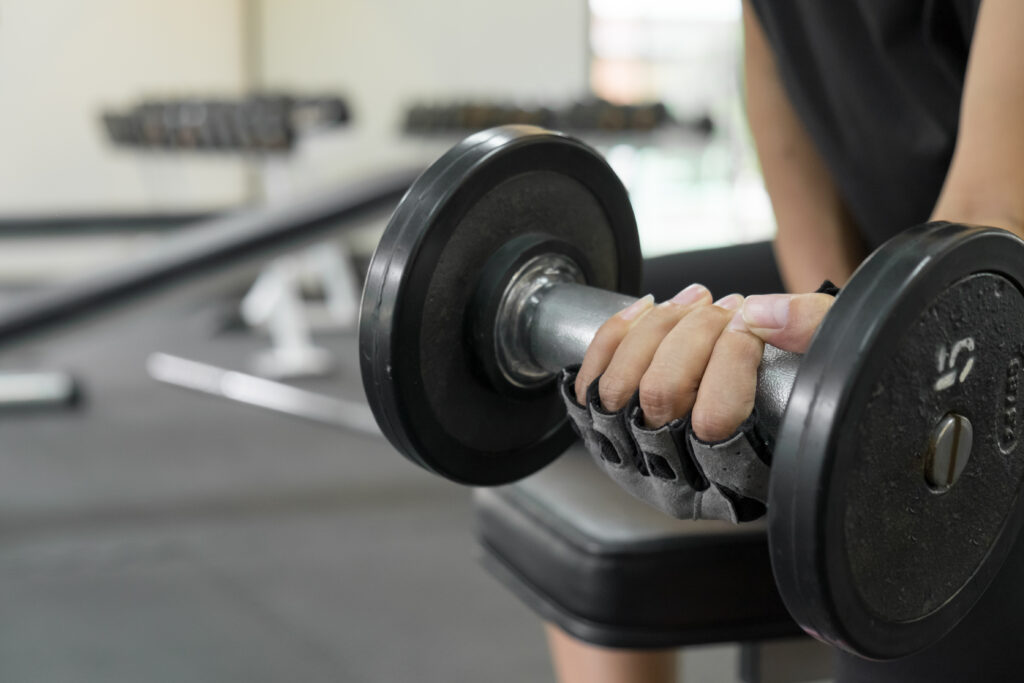
I never gave my bones much thought until a few years ago. While at my annual physical, my doctor told me I had shrunk half an inch in one year. Yikes! The risk of osteoporosis grows as we get older, and it can occur in men as well as women. I no longer take my bone health for granted, and I’ve incorporated some habits specifically for maintaining my bones. May is Osteoporosis Awareness and Prevention Month. It’s a good time to start putting some thought (and action) into supporting your bones so they can continue to support you.
Feed Your Bones the Nutrients They Need
The skeleton is a unique and essential structure of the body. There are several primary nutrients it needs to support your muscles and protect your internal organs:
Calcium – this mineral is essential for building dense, strong bones. In fact, the skeleton is the body’s main storage site for calcium, acting as a “bank” for the mineral. We can’t make our own calcium—it needs to come from our diet or supplements. With enough calcium, we can build bone density (up until our mid- to late-20s) and maintain it through much of our adulthood. But for many of us, our diets are short on calcium. Over time, our bones will release some of it to help keep levels adequate for other essential functions. To maintain sufficient levels, adults need 1,000mg – 1,200mg of calcium per day.
Vitamin D – helps us absorb the calcium in our diets (it absorbs poorly on its own). Without enough vitamin D, our bones can become soft, weak, and more prone to breaking. Foods that are rich in both calcium and vitamin D are ideal diet choices, including:
- Most dairy milks in the U.S., since they are fortified with vitamin D and naturally contain calcium
- Some yogurts that are fortified
- Canned salmon provides calcium from the bones included, and also provides vitamin D
- Eggs
- Breakfast cereals that are fortified, combined with milk
Protein – the framework of bones, called the matrix, is largely made up of protein. In fact, about 50% of bone volume is from proteins. Protein deficiency is rare in the U.S., but older folks—those the most likely to have osteoporosis—may be at risk. Among older adults (aged 71+), about half of women and a third of men don’t meet protein recommendations. Experts recommend that postmenopausal women aim for 20-25g of high-quality protein at each meal to meet daily protein needs.
Vitamin C – higher vitamin C intake correlates with higher bone mineral density and a lower risk of hip fractures in both females and males. Vitamin C also helps with collagen formation, and collagen makes up about half the bone matrix. And vitamin C is a marker in the diet for fruit and vegetable consumption. This is a hint that a diet containing plenty of produce is good for the bones.
To keep it simple, you can rely on Guiding Stars to point you toward foods that are most nutrient dense. Guiding Stars algorithms do not give points for protein content. But all vitamins and minerals do count positively toward food scores and star values. Find out more about how Guiding Stars scores foods here.
Get Regular Exercise That Strengthens Bones
We all know that staying active is essential for overall health. In the case of bone health, certain types of exercise are most important: weight-bearing activities, strength training, and balance exercises. Stress strengthens bones, and both weight-bearing and strength training activities accomplish this. However, weight-bearing activities only utilize the body’s weight, while strength training often involves additional resistance. And balance exercises may not necessarily improve your bone strength. But they can help prevent falls, thereby saving you from a painful or debilitating broken bone. Here’s a quick breakdown of all three kinds of exercises that benefit bone health:
Weight-bearing exercises – put force on the bones and require you to resist gravity while remaining standing. These types of activities help slow bone loss, and can also help bones get stronger and denser. Only those bones that bear the load of the exercise will benefit from it. In most cases, that means the bones of the lower body and hips. Examples include:
- Brisk walking and jogging
- Climbing stairs, stair-stepping machines, and hiking
- Dancing
- Racket sports like pickleball, tennis, and badminton
- Step, low-impact, and high-impact aerobics
- Jumping rope, skipping, and other jumping exercises
Strength training – requires working against resistance. It makes the muscles work harder and grow, and may also help preserve bone mass. You can perform strength training exercises by:
- Using elastic exercise bands
- Lifting weights or using weight machines
- Using your body weight (such as with calisthenics, yoga, and Pilates)
Balance exercises – help prevent falls, improve mobility, and boost coordination. If you have poor balance, make sure to always have some support nearby (such as a chair). You can work on your balance by:
- Standing on one foot
- Heel-to-toe walking on a line
- Moving laterally (from side to side)
- Shifting your weight from heels to toes
Limit Alcohol
Not only is alcohol a factor in 65% of fatal falls, it links directly to an increased risk of fractures. And, not surprisingly, the more alcohol consumed, the higher the risk of bone fractures. We need more research to know exactly how alcohol hurts bone health, but there are several suggested mechanisms. For example, alcohol consumption negatively impacts hormone functions that are important for bone health and decreases nutrient absorption. Heavy drinking doesn’t have health benefits of any kind, so keeping your alcohol intake low is the way to go. The current Dietary Guidelines for Americans recommend that, in the case of alcohol, less is definitely better. Women should limit their alcohol intake to one drink per day or less, and for men, it’s two drinks per day or less.